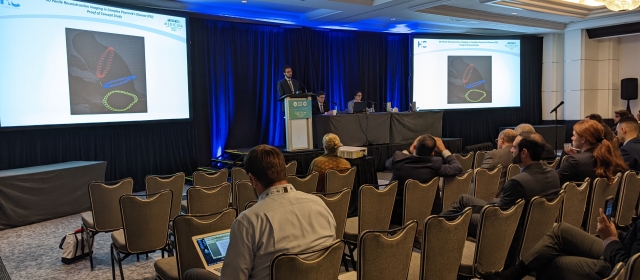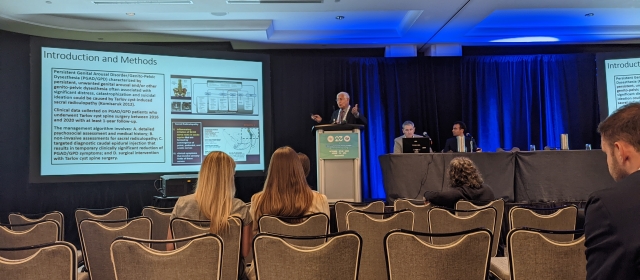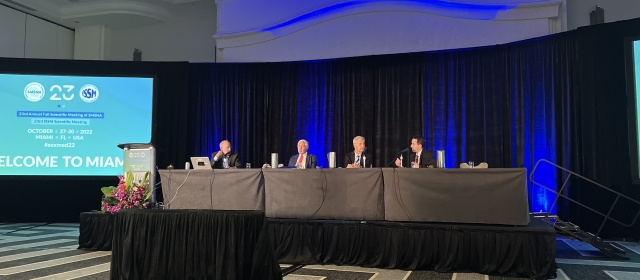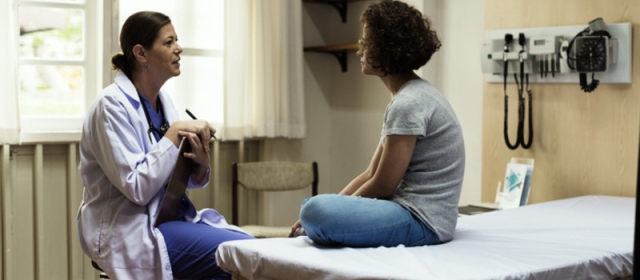
All News
Upcoming Events

Researchers frequently use Patient Reported Outcomes Measures (PROMs) to assess patients’ symptoms, functioning, and quality of life after they overcome a disease and/or receive medical treatment. PROMs are important because they allow patients to relay their own feelings and experiences regarding a disease or treatment, and they are not based solely on a provider’s examination.

Refractory Ischemic Priapism represents a rare and challenging condition to the urologist.
On behalf of researcher Allan Morey and his team, we would greatly appreciate if you could take 5 minutes out of your day to answer their brief, web-based survey.
They seek to evaluate contemporary surgical management of this condition by querying practicing urologists in multiple groups (which also includes SMSNA and ESSM) to assess practice patterns.
Please use this link to complete the survey: https://forms.gle/Sxz2hMvny52qQVRz9
Thank you for your collaboration!

Overactive bladder (OAB) is characterized by frequent, urgent urination, often including nocturia (frequent nighttime urination), that occurs in the absence of a urinary tract infection or other obvious reason. Some people with OAB may experience urinary incontinence (leaking urine), but not all do. OAB is a condition that becomes more common with age, and its estimated prevalence is 20.8% (22.1% for women and 19.5% for men).

Dr. Bruno Nascimento discussed the evaluation of penile deformity in patients with Peyronie’s disease (PD) using 3D penile reconstruction imaging today at the ISSM/SMSNA Scientific Meeting on Sexual Medicine. He explained the feasibility and accuracy of 3D imaging as an assessment tool for PD, both of which were high according to a recent study of 4 PD patients undergoing penile surgery.

During the Surgery Abstracts session at the joint ISSM/SMSNA Scientific Meeting, Dr. Irwin Goldstein presented on an algorithm on the multidisciplinary step-care management and the outcomes of Tarlov cyst spine surgery for patients with persistent genital arousal disorder/genito-pelvic dysesthesia (PGAD/GPD). The management algorithm included the following steps:

Project SEXUS is a nationwide cohort study on sexual behavior and health in Denmark that launched in 2017. Dr. Christian Graugaard presented key findings from this study that shed light on the sexual landscapes of the general Danish population at the 23rd Annual Fall Scientific Meeting of SMSNA/23rd ISSM Scientific Meeting. Of note, 8 out of 10 respondents (and 9 out of 10 male respondents) indicated that a healthy sex life including masturbation was very important to them. However, just over half (55%) of the respondents rated their sex life as “good” or “very good.” These findings suggest that there could be a need for programs that enhance sexuality.

Human sexuality, or the way that people experience and express themselves sexually, exists on a spectrum. This means that people’s sexual identities and orientations are complex and not easily classified into distinct groups. Rather, they exist on a continuum or scale that spans from one endpoint to another.

Introduction
Gender dysphoria is the distress that a person may experience when their gender identity does not align with the sex they were assigned at birth. Gender-affirming hormone therapy (GAHT) and gender-affirming surgery (GAS) are two treatment options that aim to align the characteristics of an individual with their gender identity. Studies suggest that these two medical interventions can reduce distress and improve the quality of life of people who are experiencing gender dysphoria.
Delayed ejaculation occurs when a man requires an extended period of sexual stimulation (22 minutes or more) to orgasm and ejaculate.




